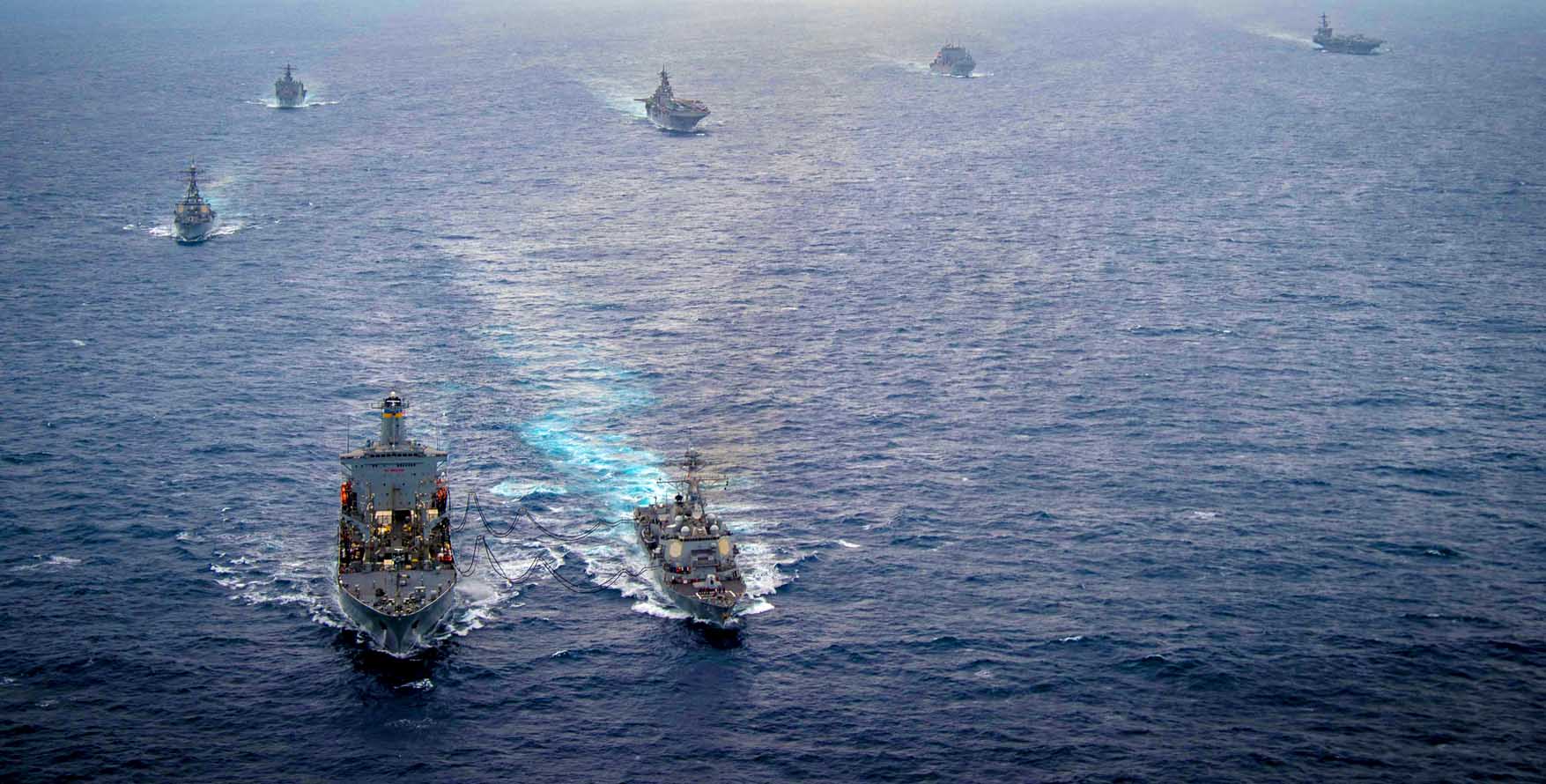Washington, DC – U.S. forces are sounding the alarm over an increasing number of precarious aerial intercepts and maritime confrontations by Chinese aircraft and vessels in international waterways and airspace. In a recent conference in Singapore, Secretary of Defense Lloyd J. Austin III voiced his growing worries about the potential for miscalculations that could escalate these tense encounters.
U.S. military aircraft and ships are continually operating across international waters and airspace around the globe. These operations, conducted under the principle of “freedom of navigation,” play a crucial role in keeping essential transportation routes accessible to all nations.
The officials said there have been “scores of dangerous incidents in the air and at sea over the past 18 months alone.” They include:
- In February 2022, a Chinese naval ship directed a laser at an Australian P-8A Poseidon aircraft operating in Australia’s exclusive economic zone, endangering the health of Australian airmen.
- In June 2022, a Chinese J-16 fighter cut across the nose of another Australian P-8A Poseidon that was operating in international airspace over the South China Sea. The Chinese jet released a round of chaff, which was ingested into the Australian aircraft’s engine.
- In December 2022, a Chinese Navy J-11 pilot flew in front of — and within 20 feet of — the nose of a U.S. Air Force RC-135, which had to maneuver away to avoid a collision. The Air Force jet was lawfully conducting routine operations over the South China Sea in international airspace.
- Just last month, a Chinese J-16 fighter pilot performed an unnecessarily aggressive maneuver during the intercept of a U.S. Air Force RC-135 aircraft. “The PRC pilot flew directly in front of the nose of the RC-135, forcing the U.S. aircraft to fly through its wake turbulence,” Indo-Pacific Command officials said.
- In June, the American destroyer USS Chung-Hoon and Canadian frigate HMCS Montreal conducted a routine transit from south to north through the Taiwan Strait when the Chinese destroyer Luyang III executed unsafe maneuvers in the vicinity of Chung-Hoon. The Chinese vessel overtook Chung-Hoon on its port side and crossed the Chung-Hoon’s bow at 150 yards.
- Recently, the Chinese coast guard employed water cannons, military-grade lasers and erratic conduct to try and intimidate the Philippines from lawful operations within that country’s exclusive economic zone, Indo-Pacific officials said.

Nonetheless, this routine activity has seen an unsettling trend in recent times. “These are not isolated incidents, but patterns of behavior that significantly increase the risk of accidents and constitute a grave threat to regional security,” warn officials from the Indo-Pacific Command.
Despite these rising tensions, U.S. officials are striving to maintain open communication channels with their Chinese counterparts to discuss these hazardous encounters. The Chinese military, however, has reduced contact between U.S. and Chinese military officials. Officials from the Department of Defense (DOD) affirm the U.S. commitment to opening lines of military-to-military communication with the People’s Republic of China (PRC). Their goal is to manage the defense relationship between the two countries responsibly.
While these conversations are ongoing, the United States maintains its commitment to operating—safely and responsibly—in all regions where international law permits. According to DOD officials, U.S. forces “will continue to fly in international airspace with due regard for the safety of all vessels and aircraft under international law,” DOD officials said. “We expect all countries in the Indo-Pacific region to use international airspace safely and in accordance with international law.”
Source: Dept. of Defense





